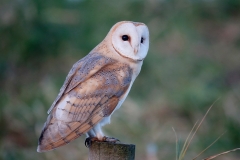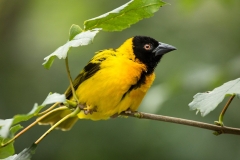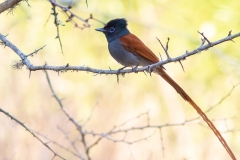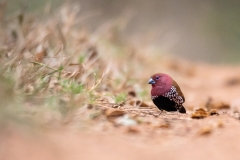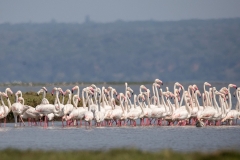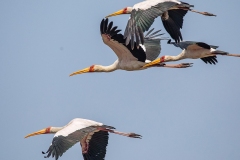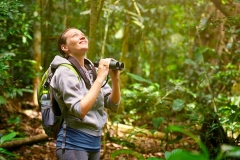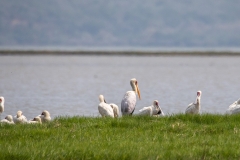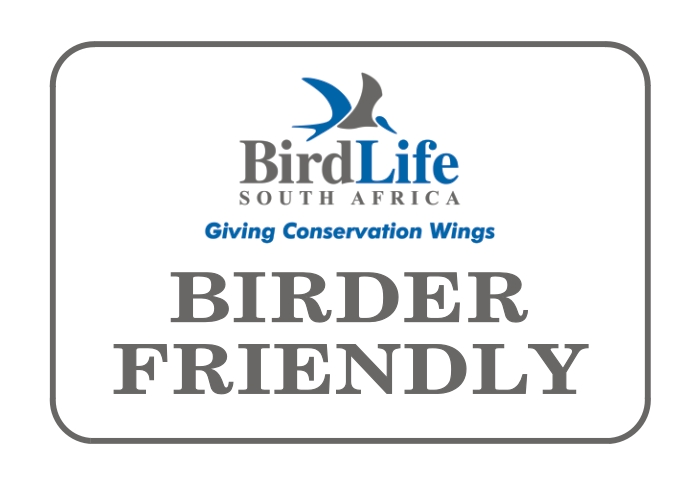
A highlight for nature enthusiasts is a trip to the nearby floodplains. Spot the highly sought-after and beautiful Rosy-throated Longclaw as well as large flocks of Flamingos. Nibela Lake Lodge and surrounds is one of the highest diversity areas for birds in South Africa. The area supports well over 400 species of birds, including numerous rare and endemic species.
For the casual birder, guided walks in the surrounding forest, wetlands and savannah areas are an ideal place to get to know your birds. Our experienced and highly knowledgeable bird guides can help you learn the birds and sounds you will encounter in the area. Everything from Fish Eagles to Flamingo’s, Pelicans and a whole host of colourful forest birds will certainly brighten up and enrich your holiday experience. For the more serious birders, Nibela is the place to fill those gaps on your life list. Our bird guides have spent years exploring the area and will go out of their way to find stakeouts for your target birds. Just give us your “wish list” and our guides will plan your birding trip from there. See some of the many birding spots below:
BIRDING @ THE LODGE
There are numerous hiking trails on the Nibela Lake Lodge property. The rich sand forest, Acacia veld and the lake shores are home to a variety of very special species including, Pink-throated Twinspots, Narina Trogon, Green Malkoha, Eastern Nicator, Gorgeous Bush Shrike, Rudd’s Apalis and African Broadbill.
No less than nine sunbird species have been recorded in the area, including the rare and endemic Neergard’s Sunbird. Other specials you can expect on the property include African Wood Owl (regularly heard calling from the chalet’s in the evenings), Green Twinspot in the more dense forest areas, Bearded-scrub Robins, the spectacular Emerald Cuckoo, Blue-cheeked Bea-Eater, Crowned Hornbill and Crested Guineafowl. You are free to explore the property and hiking trails on your own or take a guided walk to help you find some of the more elusive species. For avid bird photographers we have a small hide and several water features that are ideal places to wait for the perfect shot of a variety of more unusual species.
BIRDING @ THE FLOODPLAINS
The highlight (and a must for any nature enthusiast) is a trip to the nearby floodplains. The floodplains, a short drive from the lodge are probably one of the best places in the world to see the highly sought after and beautiful Rosy-throated Longclaw. These floodplain areas are also home to large flocks of Flamingo’s, many waders, including annual sightings of rarities such as Long-toed Lapwing, Caspian Plover and Rufous-bellied Herons. The forest and bush around the floodplains is also home to many special terrestrial birds such as Southern-banded Snake Eagle, Croaking Cisticola, Lemon-breasted Canary and Grey Waxbill.
BIRDING @ FALSE BAY
Situated about 30 minutes’ drive from Nibela Lodge, False Bay Park is found along the western shores of Lake iSimangaliso Wetland Park and forms part of the Greater iSimangaliso Wetland Park, which is a World Heritage Site. Most of the 2 247 hectare False Bay Park is covered with sand forest, woodland and mixed patches of open shoreline. False Bay Park also boasts one of South Africa’s only Pink-backed Pelican colonies. Two main trails, the Dugandlovu and Mpophomeni trails, offer excellent opportunities to explore the fantastic birdlife in this area.
The edge of the lake consists of grassy lawns, where Pink-throated Longclaws can be found, if flooded, in vegetation-covered inlets. A variety of water birds occur in the inlets, and Lesser Jacana can be spotted where there are water lilies. Goliath Heron, Black Egret and Little Bittern may be found standing quietly among the edge vegetation, while Painted Snipe prefer the muddy areas. Visitors should be aware that crocodiles frequently bask along the shoreline as well.
Away from the water, the two trails lead through open woodland and closed sand forest, allowing a variety of birds to be seen. In the open areas look in the tops of bare trees for Southern Banded Snake-Eagle, and Broad-billed Roller in summer. Look and listen in areas with dense undergrowth for the shy Green Coucal, and look along the edges for the Maputaland endemic Pink-throated Twinspot. These clearings are also good places to find Neergaard’s Sunbird when nectar producing trees such as the Weeping Boer-bean Schotia brachypetala and the coast coral tree Erythrina caffra are in flower. Look carefully, as the similar, but longer-billed, Purple-banded Sunbird also occurs here. Keep an ear open for the staccato “tik-tak-tirr” of Crested Guineafowl, which are plentiful here, but keep to the forested areas.
The most exciting birding is to be had in the closed canopy sand forest, dominated by trees such as the Lebombo wattle Newtonia hildebrandti, Zulu podberry Dialium schlechteri and black monkey thorn Acacia burkei.
Bird parties are frequently encountered, allowing a variety of species to be seen in a short time. These parties include Rudd’s Apalis, White Helmetshrike, Square-tailed Drongo and Yellow-bellied Bulbul. Look carefully among the branches under the canopy for the colourful Narina Trogon and the Eastern (Yellow-spotted) Nicator, which may be heard calling from a long way off.
The sand forest in False Bay Park is probably one of the best places to see African Broadbill. Along the trails, find a patch of forest with a closed canopy but an open understorey. The Broadbill may be found sitting quietly on a branch a couple of metres above the ground, but patient searching is required as the bird is cryptically coloured. If you are fortunate to visit the area in breeding season, its distinctive and far-carrying “purr-rupp” call may guide you to its location.
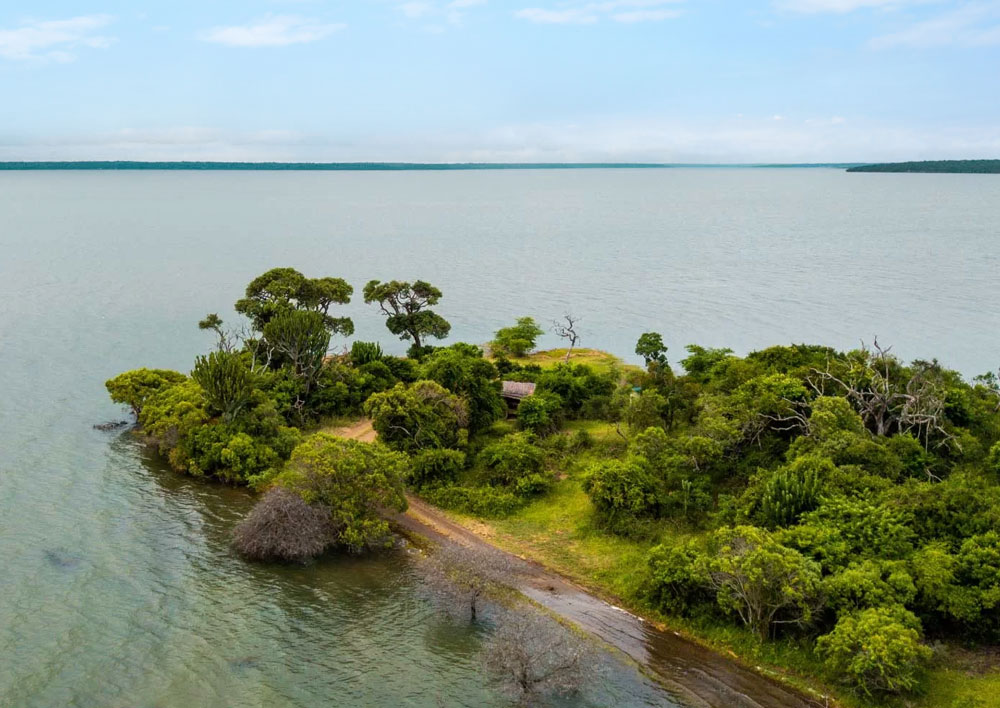
BIRDING @ UMKHUZE GAME RESERVE
We recommend entering uMkhuze Game Reserve via the D820 past Muzi Pans when travelling from Nibela Lake Lodge, since this is a far shorter route than the “old” entrance from uMkhuze Town, this gate is about 45 minutes’ drive from Nibela.
uMkhuze Game Reserve was proclaimed in 1912 and covers some 40 000 ha and falls within the iSimangaliso Wetland Park. This reserve rates as one of South Africa’s favourite birding destinations and is one of Zululand’s top 3 birding spots. Mkhuze also boasts one of South Africa’s highest checklists for a protected area with over 400 species being recorded here. The main reason for this is the diversity of habitats included in the protected area. These include pans, swamps, acacia thornveld, sand forest, riverine forest and open woodland. There are even mountainous areas with cliffs as well as open grassland in places.
The Sand Forest around Kumasinga hides is the best place to find Pink-throated Twinspot, African Broadbill, Gorgeous Bush-Shrike, African Barred Owlet and Yellow-bellied Greenbul. If you are lucky you might also spot a Red-billed Helmetshrike. In late winter and early spring, flowers of the Weeping Boer Bean tree act as powerful magnets to Neergard’s, Purple-banded, Collared, Eastern Olive, Grey, Scarlet-chested and White-bellied Sunbirds. Purple-crested Turaco, White-crested Helmet-Shrike, Woolly-necked Stork, Comb Duck, Lesser Moorhen, Dwarf Bittern, Stierling’s Wren-Warbler, Red-backed Mannikin, Grey Waxbill and Crested Guineafowl can all be recorded from the two hides, which must rate as some of the best in the country. The grassy verges along ‘waterholes’ at these hides are renowned for harbouring Dwarf Bittern and Greater Painted Snipe in the wetter summer months.
Mantuma camp is a great place to observe Bearded Robin at close quarters, as well as Grey Tit-Flycatcher, Lesser Masked-Weaver, Collared Sunbird and in summer, Violet-backed Starling. A small hide next to a waterhole in the camp can provide close-up views of birds, including Purple-crested Turaco. The Riverview Walk, (which leaves from opposite the camp office), offers a good opportunity to look out for Pink-throated Twinspots and Grey Waxbills, especially in the early mornings and evenings. Eastern Nicator frequently haunts the tangles around the safari camp. The Loop Road area consists of open thornveld, and the birder could see Burnt-necked Eremomela, Grey Penduline Tit, Bushveld Pipit, Flappet Lark, Grey Go-away Bird, Brownheaded Parrot and a number of raptors including Tawny, Steppe and Lesser Spotted Eagles. The raptors are especially prominent after heavy rains when they prey on emerging termite alates (flying ants).
Nsumo Pan is a wonderland for waterbirds, an extensive wetland fed by the Mkhuze and Umsunduze Rivers. This pan is home to South Africa’s only breeding colony of Pink-backed Pelicans. Yellow-billed Stork, African Spoonbill and various egret species also breed in the fever trees (Acacia xanthophloea) on the southern side of the pan.
Interesting birds found around the picnic spot at the pan include Red-capped and White-browed Robin-Chat, Green-capped Eremomela, Woodland Kingfisher, African Broadbill and Tambourine Dove. Waterbird numbers are dependent on the water level of the pan. In early spring when fairly dry, many waders are present. In late summer when fairly full, many duck and geese are present, (Spurwing Geese and Whitefaced Ducks often occurring in very big flocks). Goliath Heron, Openbilled Stork, Pygmy Goose and Lesser Jacana are also found at the pan.
Fig Forest, situated adjacent to the pan, is a magical, enchanting place filled with birds, but do enquire about accessibility before going there. Species to be found in this forest include Yellow-rumped Tinkerbird, Narina Trogon, Broad-billed Roller, Green Malkoha, Southern-banded Snake Eagle, Blue-mantled Crested-Flycatcher, Black-throated Wattle-eye, Black-bellied Starling, Green Twinspot…. the list just goes on and on. Trumpeter Hornbills are constantly calling in the forest, their eerie wails echoing amongst the tall trees and Pels Fishing Owl is resident, but not often seen.
The thornveld around the airstrip is famous as the region’s “hot spot” for Olive-tree Warbler, but other species to look out for include Senegal Lapwing, African Pipit, Icterine Warbler, Lizard Buzzard and Desert Cisticola.
The area around Ediza Pan is also great for birds, especially in summer. Greater Painted-snipe, Pygmy Goose, African Hawk-Eagle, Dwarf Bittern, Allen’s Gallinule, White-browed Robin-Chat, Squacco Heron and Green-backed Heron are all recorded around the pan and the small dam next to the road just north of Ediza.
Rudd’s Apalis is seen all over the reserve.

BIRDING @ MUZI PAN
About a half hour drive from Nibela Lake Lodge is Muzi Pans, one of the most famous wetland birding sites in South Africa.
Muzi Swamps or Pans are locally well known for the abundance of waterbird species that occur there. Surrounded by rural villages and forest, the swamp is a typical coastal plain wetland with patches of sedge-marsh, open water, bare shores and some floating vegetation. It is situated on the Mkhuze River floodplain, between Mkhuze Game Reserve and Lake St. Lucia. The pan system becomes a major summer residence for palaeartic waders and some afro-tropical species. The densities and diversity of birds heightens dramatically during summer and regular birding trips here can produce in excess of 120 species in a summer’s day.
A wide variety of waterbirds can be seen in a short time period. The list of specials is impressive, with Pink-backed Pelican, Black Heron, Dwarf Bittern, Woolly-necked and Saddle-billed Storks, African Openbill, Comb Duck, White-backed and Fulvous Ducks, African Pgymy-goose, African Marsh-harrier, Lesser Moorhen, Allen’s Gallinule, Lesser Jacana, Senegal Lapwing, Greater Painted-snipe, Collared Pratincole, Caspian Tern and Black Coucal all being recorded annually.
Some of the more common species include Goliath Heron, White-faced Duck, African Jacana, African Fish Eagle and White Pelican.
Longtoed Lapwing and Rufous-bellied Heron are recorded occasionally.
wide variety of woodland birds can also be recorded around the pans. They include Swamp Nightjar, Blue-cheeked Bee-eater, Broad-billed Roller, Grey-rumped Swallow, Eastern Nicator, Bearded Scrub-robin, White-starred Robin (winter), Rudd’s Apalis, Rufous-winged and Red-faced Cisticolas, Burnt-necked Eremomela, African Yellow White-eye, Gorgeous Bush-shrike, Pink-throated Twinspot and Lemon-breasted Canary. Red-billed Oxpeckers are often seen feeding on the cattle next to the pan.










